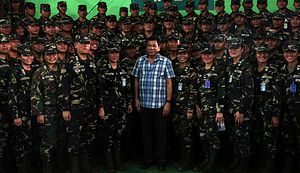On Friday, Philippine officials confirmed that the Southeast Asian state would hold a new joint service military exercise. While details still remain unclear, the engagement, which has been labeled the first of its kind, has nonetheless highlighted ongoing efforts by the country to boost its capabilities and preparedness to address a range of security challenges.
As I have noted previously, while the Philippine military, known as the Armed Forces of the Philippines (AFP) has long faced a range of internal and external challenges – including insurgencies, natural disasters, and unresolved territorial and sovereignty issues with neighboring states – it has also found it difficult to increase its capabilities to handle these issues due to a series of factors, including anemic and astrategic investment. Over the past few years, there have been various efforts to try to overcome some of the AFP’s key challenges, including larger defense budgets and reforms within individual services.
This week, Philippine defense-related developments were in the spotlight with news of the holding of a new joint service military exercise. Philippine officials disclosed that the Armed Forces of the Philippines (AFP) would hold what would constitute a joint exercise featuring the Philippine army, navy, and air force later this month in an effort to boost collaboration between the services.
Per the AFP’s public affairs office chief Rhyan B. Batchar, the joint exercise, named “DAGIT-PA 03-19,” would he held various locations in the Philippines from September 16 to September 27. The exercise would consist of various components, including an opening ceremony in Camp Aguinaldo, Quezon City; an amphibious assault exercise at the Naval Education and Training Center (NETC) in San Antonio, Zambales; an airfield retake exercise and military operations in urban terrain at Fort Magsaysay, Palayan City, Nueva Ecija; and a closing ceremony at Camp Aguinaldo.
The holding of a new joint service military exercise is not without significance. As Batchar noted, the exercises constituted the first engagement of this kind for the AFP that involved all three main services. The planned structure of the exercise is testament to efforts to accomplish this. While there will be showcasing of certain capabilities including the Navy’s latest amphibious assault vehicles, the various components are also designed to highlight the importance of integration among the services with respect to several areas.
To be sure, while the holding of the exercise is testament to Philippine efforts to facilitate joint service collaboration, there are no doubt lingering challenges that remain in actually achieving that goal. Issues such as differences in organizational culture and continued interservice competition and rivalry – hardly unique to the Philippines – continue to be there and will take a lot more to address. Nonetheless, this notable first deserves mention as policymakers grapple with how to manage the opportunities and challenges in interservice cooperation and integration.

































